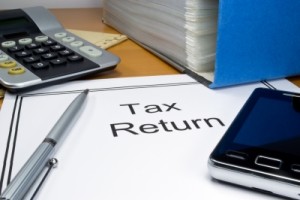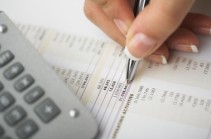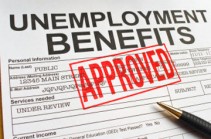How to Utilise Your Tax Refund to Get Control of Your Finances
 If you are anticipating a tax return this year, it may provide an opportunity to get control of your finances and start the path to financial freedom. It is extremely important, however, that you create a plan for spending your tax return before you actually receive the money.
If you are anticipating a tax return this year, it may provide an opportunity to get control of your finances and start the path to financial freedom. It is extremely important, however, that you create a plan for spending your tax return before you actually receive the money.
This will prevent impulse spending and ensure that you spend your money wisely. Below is a look at the best ways to spend your tax return money this year.
Start an Emergency Fund
If you do not already have an emergency fund setup, or your emergency fund does not total at least three months of your total salary, then you should plan to set some of your tax refund aside for this fund. If you do not already have an emergency fund, go to the bank and open up a special savings account that is not connected to any of your other bank accounts. This money will sit in this account and accrue interest unless you face a financial emergency, such as need major home or car repairs, you are injured or become sick, or your lose your job.
You should put as much of your tax refund into this account as possible, but at least 10 percent. The goal is to keep putting small amounts into this special savings account, until you have at least three to six months’ worth of your salary. This will give you enough money to live on, while you deal with your financial emergency.
Take Care of Past Due Accounts
If you have any past due accounts, such as overdue utility bills or rent/mortgage payments, you want to use part of your refund to catch up with these payments. This can avoid having your utilities shut off or being evicted from your home. However, before you automatically pay off these outstanding debts, you should call the companies you owe money to and see if you qualify for any type of hardship allowance. This can reduce the total amount of money you owe, which means you will be able to use less of your refund to catch up on these bills.
Pay Down Debt
Once those two areas are taken care of, you should spend the rest of your tax refund paying some of your other outstanding debt. Before your refund even arrives, sit down and make a list of all your outstanding debts. Write the total amount of money you still owe on these debts, what the minimum payment is each month, and what the interest rate is. Determine how much money from your refund you have available to pay down your debt, and then determine which debts you want to pay on.
You will want to look for credit cards or loans with high-interest rates and consider paying them off first. This will help you save money over time by reducing the amount of money you need to pay in interest for your debt. However, you may also want to look for debt with a low balance, and consider paying them off first instead. This reduces the amount of money you need to pay out each month and put more money into your pocket. This may make managing your household budget easier. Learn more about eliminating debt here.
Consolidate Loans
Now may also be a good time to consider consolidating all your debt into one low-interest loan. Stop by your local bank or credit union and see what options are available to you, or check to see if you have a low-interest credit card that you can transfer your balance to. This will only work if you qualify for a consolidated loan that has a lower interest rate than what you are already paying on your debts. If you select this method; use as much of your refund as possible to pay towards your outstanding debt before consolidating the loans.
It is important to start with your emergency fund, even if you still owe a lot of money. This way if an emergency happens in the near future, you will have money available and will not have to go further into debt. Also, be sure to have a plan for your money before it arrives and make a commitment to use this money to get control of your finances.
Image by Grant Cochrane




